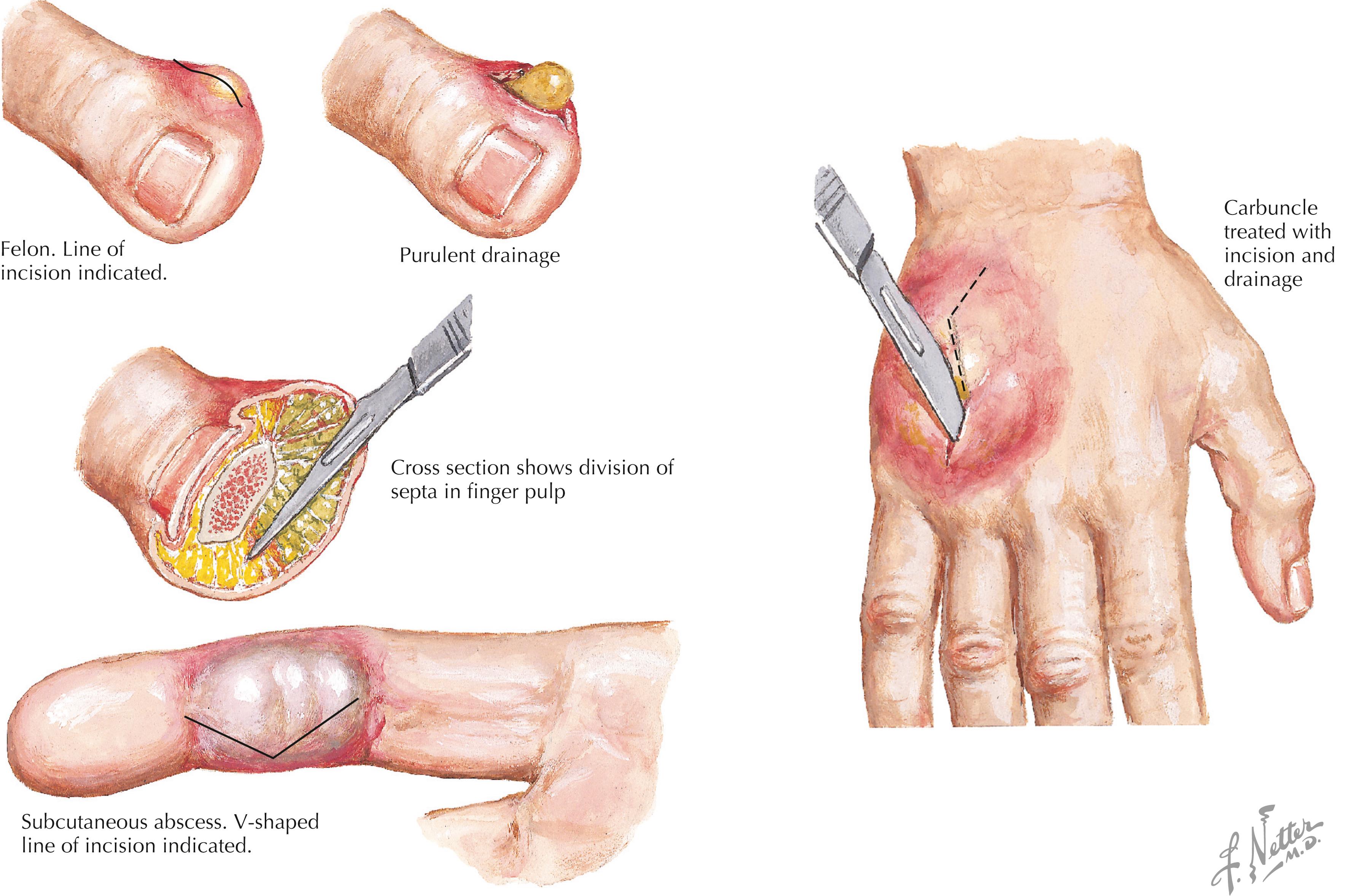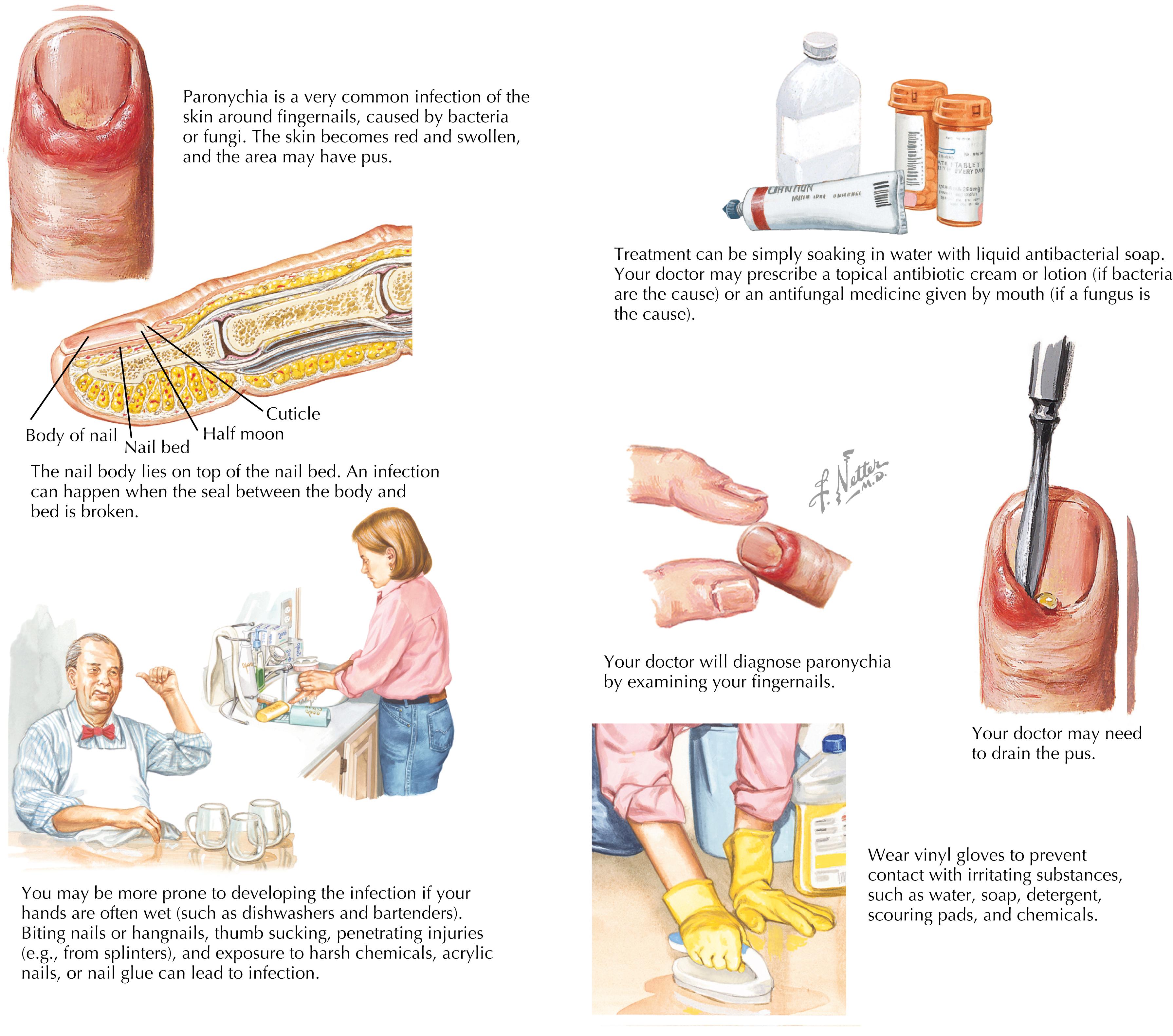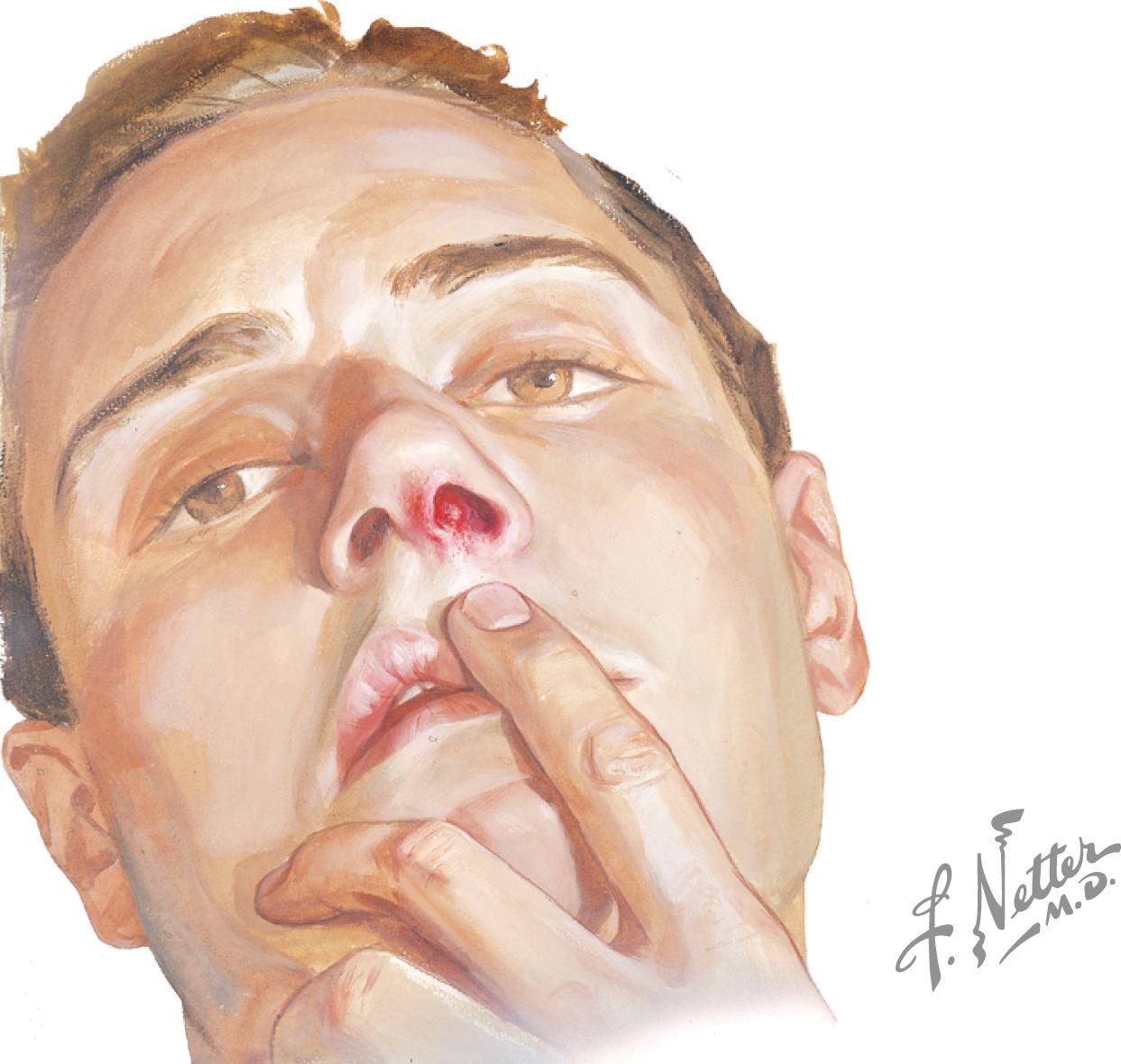Physical Address
304 North Cardinal St.
Dorchester Center, MA 02124
Localized purulent infections of the skin are extremely common in all parts to the world, in all age groups, and in both sexes. Staphylococcus aureus is the single most common cause of these infections; most are minor, requiring only local treatment such as drainage, unless systemic effects are evident, in which case surgical incision and drainage as well as appropriate antibiotics are necessary. In the past a wide variety of antibiotics were effective against these bacteria, but over the last 5 to 6 years there has been a virtual explosion of skin and soft tissue infections caused by methicillin-resistant S. aureus (MRSA). MRSA infections pose two major problems for the clinician: first, resistance to all β-lactam antibiotics including cephalosporins, and second, an apparent increase in severity.
A 25-year-old patient noted a small papule on her left arm 2 days earlier. The papule has gotten red and painful and has reached a size of 5 cm. She has never had such lesions and reports to her physician. The area looks like a volcano with reddened skin and fluctuance. The patient denies having had a fever or chills and has no known underlying illnesses. The physician decides to do an incision and drainage, obtain cultures, and have the patient return in 1 month.
The patient returns with a recurrent abscess at the same site and a second lesion on her right arm.
Cultures from the previous incision and drainage demonstrate MRSA. The organism is sensitive to linezolid, vancomycin, trimethoprim-sulfamethoxazole, and clindamycin. The physician again performs incision and drainage and prescribes a 5-day course of clindamycin taken orally.
A nasal swab was obtained, which grew the same microbe. This is instructive to the patient that the source of these recurrent infections is the anterior nares and that placing a finger in the nares and then scratching her skin inoculates the organism wherever she scratches. With a positive nasal culture, topical agents to the anterior nares could include mupirocin, bacitracin, or other agents. In addition, oral treatment for staphylococcal abscesses beyond incision and drainage have been associated with reduced recurrence.
S. aureus is once again reemerging as a major threat to human health and well-being the world over. Folliculitis, furuncles, and carbuncles have plagued Homo sapiens throughout their evolution. S. aureus too has evolved and adapted to a wide variety of human conditions and medical innovations. After the introduction of antibiotics, S. aureus developed resistance to penicillin in the 1940s; in the 1950s it emerged as an important cause of serious nosocomial infections. With the development and widespread use of chloramphenicol and tetracycline in the 1960s, a wide variety of superinfections with antibiotic-resistant S. aureus strains occurred. The timely discovery of β-lactamase–resistant cephalosporins and later the semisynthetic β-lactam antibiotics (methicillin, oxacillin, and nafcillin) provided effective treatments for the next 10 to 15 years. Still, as early as the 1970s, sporadic reports of MRSA began to appear. Epidemics of MRSA were reported in some unique facilities with extremely ill patients and with intense antibiotic usage. Over the subsequent 20 to 30 years, the widespread emergence of MRSA infections has been observed in certain regions of Europe, throughout the United States, as well as in Japan and the Western Pacific. Until very recently, these MRSA strains have largely been associated with hospital-acquired MRSA (HA-MRSA). Only recently have reports of true community-acquired MRSA (CA-MRSA) infections begun to emerge. Empiric treatment of some of these cases with conventional antibiotic agents was inadequate; it resulted in disastrous outcomes before it was determined that the causative agent was MRSA. CA-MRSA has been named the USA300 strain.
Staphylococci colonize the skin and nasal mucosa of approximately 20% of the population. Proliferation of these bacteria within the epidermis or dermis can occur after minor trauma that carries the microbes to deeper structures. Thus a sliver can carry staphylococci into the dermis and result in a felon or subcutaneous abscess ( Fig. 20.1 ). In addition, alteration of the barrier function of intact skin after water immersion, thumb sucking, or the removal of a hangnail can result in paronychia ( Fig. 20.2 ). Similarly, obstruction of hair follicles can result in the development of folliculitis, furuncles, and carbuncles in the skin (see Fig. 20.1 ) or in the anterior nares ( Fig. 20.3 ).



The earliest tissue response in staphylococcal infection is acute inflammation with a vigorous exudation of polymorphonuclear leukocytes. Vascular thrombosis and tissue necrosis quickly lead to abscess formation. As a result of the development of a fibrin meshwork and later fibroblast proliferation, these abscesses become walled-off zones of loculated infection and tissue destruction, with dying leukocytes and viable bacteria at the center. Fibrosis and scarring are often prominent in healing. CA-MRSA strains appear to have the ability to cause necrosis of not only soft tissue structures but also of lung tissue. Although the precise toxin responsible is debated, the histopathology suggests disruption of vascular integrity, reduced tissue perfusion, and subsequent tissue necrosis.
There is now clear genetic-based evidence that CA-MRSA strains are distinct from HA-MRSA. In fact, Daum and colleagues (2004) demonstrated that there are at least four different types of mecA (methicillin resistance) gene cassettes. Interestingly, types I, II, and III are associated with strains causing HA-MRSA infections, whereas type IV distinguishes CA-MRSA strains. The type IV mecA gene cassette is much smaller (23 kD) compared with types I, II, and III, which are 95, 80, and 55 kD, respectively. It has been postulated that if a smaller gene cassette size is in fact associated with a greater likelihood of transfer of antibiotic resistance to sensitive strains, then many strains of S. aureus in the community could acquire mecA gene cassette type IV and the prevalence of CA-MRSA infections would increase dramatically. Indeed, this phenomenon has come to fruition, and recent estimates document that 59% of staphylococcal isolates causing skin and soft tissue infections in the outpatient setting are in fact CA-MRSA. Whereas most of the infections associated with CA-MRSA are folliculitis, furuncles, carbuncles, and cutaneous abscesses, more severe infections have been described, including necrotizing fasciitis and hemorrhagic necrotizing pneumonia. In each case, these novel syndromes have occurred after S. aureus strains acquired mobile genetic elements, usually bacteriophages carrying genes coding for certain virulence factors. Subsequently, specific toxin genes, including the Panton-Valentine leukocidin (PVL) gene, were incorporated into the CA-MRSA genome. Although there is clearly an association between CA-MRSA strains, severity of infection, and presence of the PVL gene, Hamilton and colleagues (2007) showed no correlation between the severity of human diseases and the level of PVL production in various CA-MRSA clinical strains. Additional studies to identify the role of virulent extracellular toxins of S. aureus in human diseases are warranted. Whereas PVL toxin has gotten much attention, clearly alpha-hemolysin– and fibronectin-binding proteins, among others, are well-recognized virulence factors in a variety of S. aureus infections.
The importance of the granulocyte in host defense is supported by the enhanced susceptibility to staphylococcal infections seen in patients with neutropenia or various disorders of neutrophil function, such as chronic granulomatous disease, Chediak-Higashi syndrome, and various disorders of neutrophil chemotaxis. Although it has been suggested that diabetic patients are especially prone to develop boils and carbuncles, few data support this concept. In contrast, it is well established that patients with Job syndrome, who have high levels of serum immunoglobulin E (IgE) antibody and often a congenital defect of the STAT3 signaling pathway, are strongly predisposed to these focal S. aureus infections. However, the most important factors predisposing to staphylococcal infections are not immunologic defects but mechanical defects. Minute skin abrasions, other minor trauma, and puncture wounds from slivers, to mention only a few, provide the portal of entry for most staphylococcal skin infections.
Pustules or abscesses can develop when microorganisms that permanently or transiently reside on skin surfaces are introduced into deeper tissues after even minor skin trauma, as described earlier. Pathogens can also seed the skin hematogenously after bacteremia secondary to a variety of infections, including endocarditis, or by contiguous spread from infectious foci in the lung or gastrointestinal tract. Most commonly, small focal abscesses develop in the superficial layers of the skin, where hair follicles serve as the portal of entry. Such lesions are called folliculitis . S. aureus accounts for most of these infections, but many different bacterial species can cause localized folliculitis on occasion.
Folliculitis can progress to form subcutaneous abscesses called furuncles or boils , which usually drain and resolve spontaneously but may progress to form a large, exquisitely painful group of contiguous furuncles, called a carbuncle . Felons are subcutaneous abscesses that develop on the pulp of digits (see Fig. 20.1 ), and paronychia develops between the nail bed and the overlying skin of a digit (see Fig. 20.2 ).
Become a Clinical Tree membership for Full access and enjoy Unlimited articles
If you are a member. Log in here